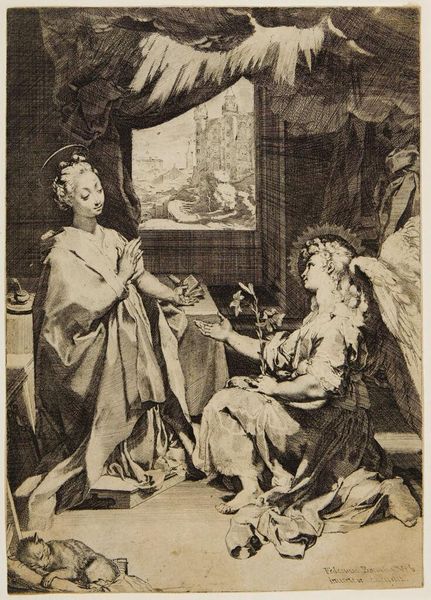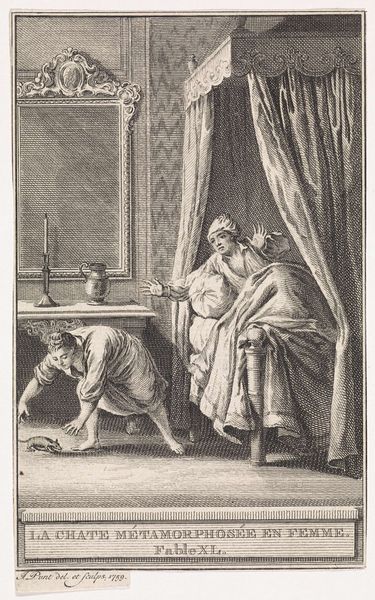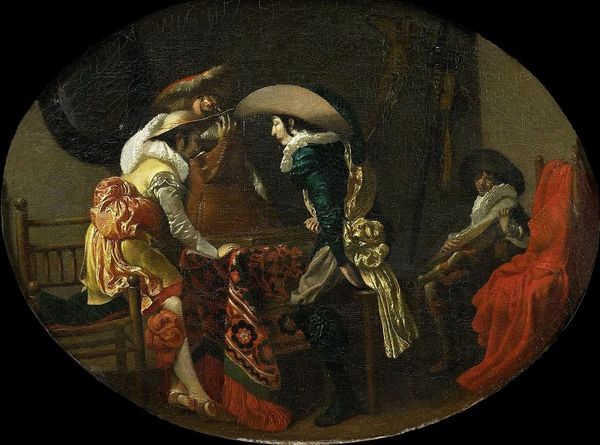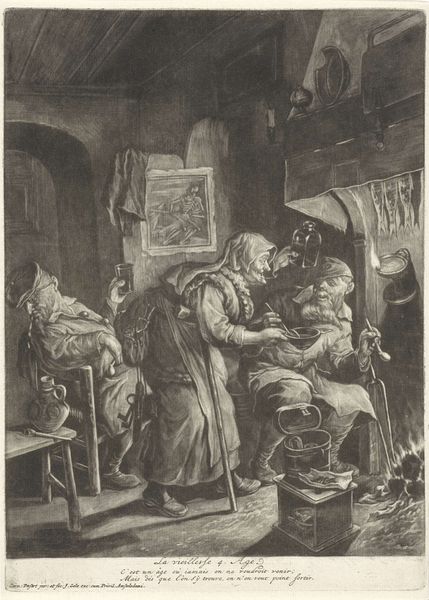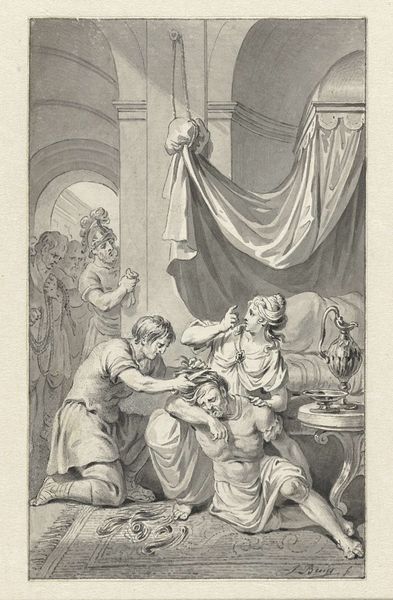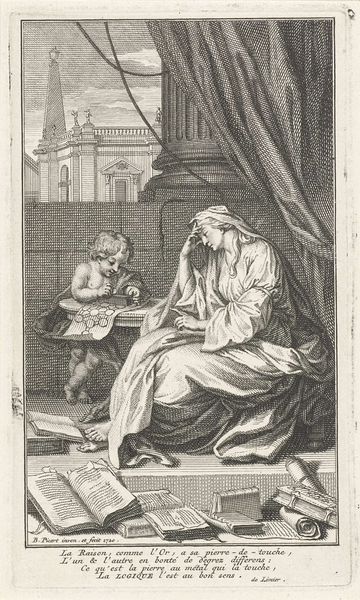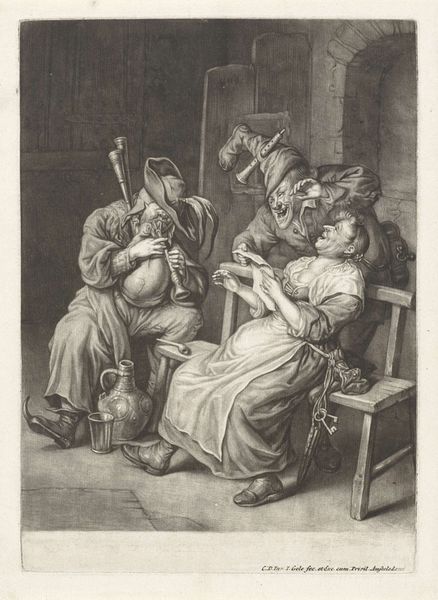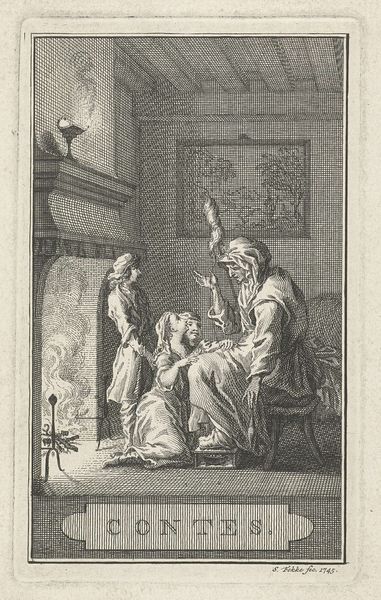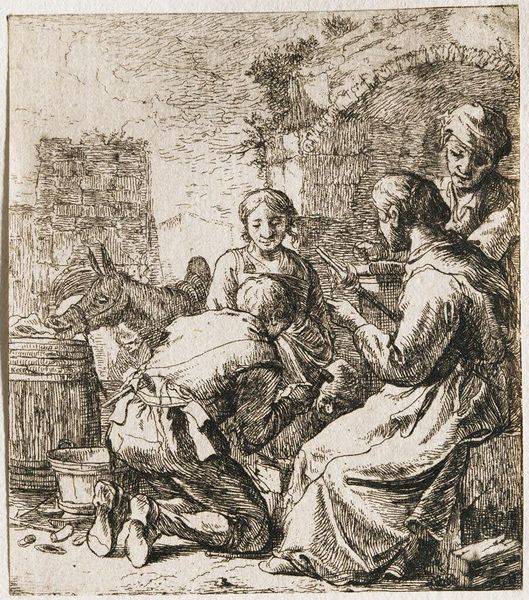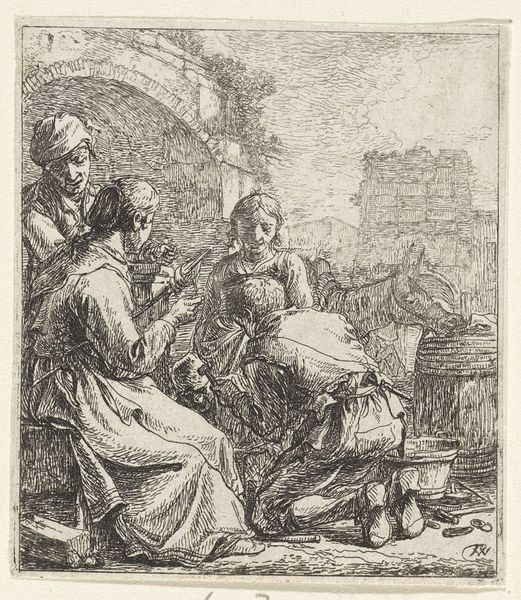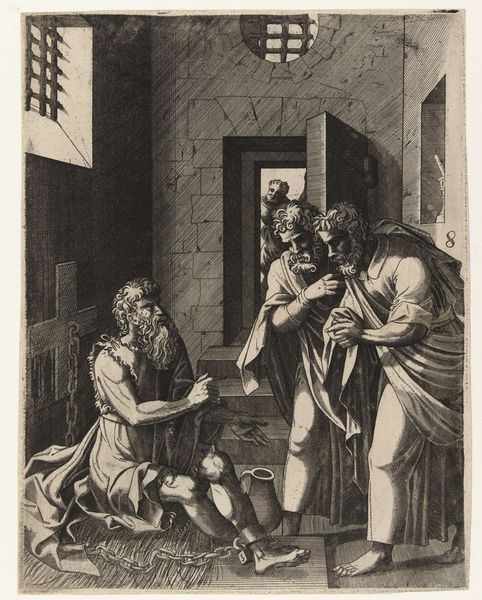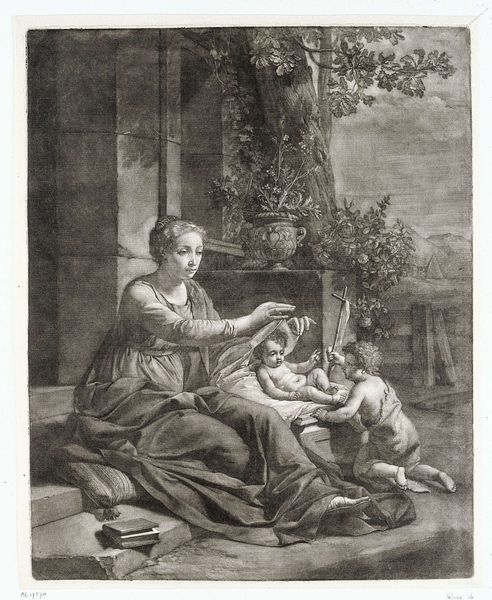
painting, oil-paint
#
portrait
#
baroque
#
painting
#
oil-paint
#
sculpture
#
figuration
#
costume
#
painting painterly
#
genre-painting
#
academic-art
#
realism
Copyright: Public domain
Curator: Stepping into the world of Jacob Ochtervelt, we find ourselves before "The Drawing Lesson," an oil painting. I’m struck by its immediate intimacy; the way the scene unfolds feels so personal, so domestic. Editor: It does. The muted palette and the focus on the relationship between the figures suggests a rather controlled, almost bourgeois narrative. How might the materials and setting inform the social commentary here? Curator: Well, let’s start with the canvas itself. Ochtervelt was masterful with his oil paints, layering them to create a rich, almost tangible surface. Notice how he uses light to accentuate the textures—the folds of the clothing, the sheen on the table, the fur of the dog. It all speaks to a certain level of comfort and affluence achieved through material production. Editor: Exactly, it's crucial to read this tableau against the backdrop of Dutch Golden Age societal norms. The woman, ostensibly receiving art instruction, signifies leisure and status, commodities earned on the backs of colonial ventures. How does the very act of "learning to draw" become a performance of privilege? Curator: It’s a performance carefully constructed, indeed. But what's fascinating to me is how Ochtervelt highlights the tools and the processes, making visible the work that goes into creating art—even at a leisurely, almost decorative level. Consider the sculpture to the side. A classical subject, no doubt plaster. How are these things made, distributed, consumed, acquired? Editor: The backdrop painting is suggestive, as well. While difficult to distinguish, this element alludes to class anxieties seeping into artistic narratives. Are these classical subjects escapist fantasies, or a celebration of dominance? Further, let us observe how the inclusion of a servant reinforces this division of labor. Curator: Yes, a hierarchy visibly demonstrated by each subject's implied duties, desires, and activities. To the right, an easel indicates the material constraints of creation. An expensive display, given how much paint must cost back then. The canvas would require a lot of heavy treatment, too. Editor: Precisely. Ochtervelt subtly interrogates the systems of patronage and the dynamics of class by placing art instruction in the framework of privilege and leisure. He also reminds us to consider from where that affluence comes. The colonial exploitation, patriarchal expectations... it's a quiet yet searing indictment. Curator: On my end, "The Drawing Lesson" serves as an introduction into considering labor: skilled craftspeople generating these materials; trades across many countries necessary to sell canvas, frames, paint; artists making money by rendering comfortable social spaces in minute detail. Editor: Indeed. Thinking about the painting this way illuminates our own understanding and relationship to wealth, artistic license, and class structure in contemporary art spaces today.
Comments
No comments
Be the first to comment and join the conversation on the ultimate creative platform.
